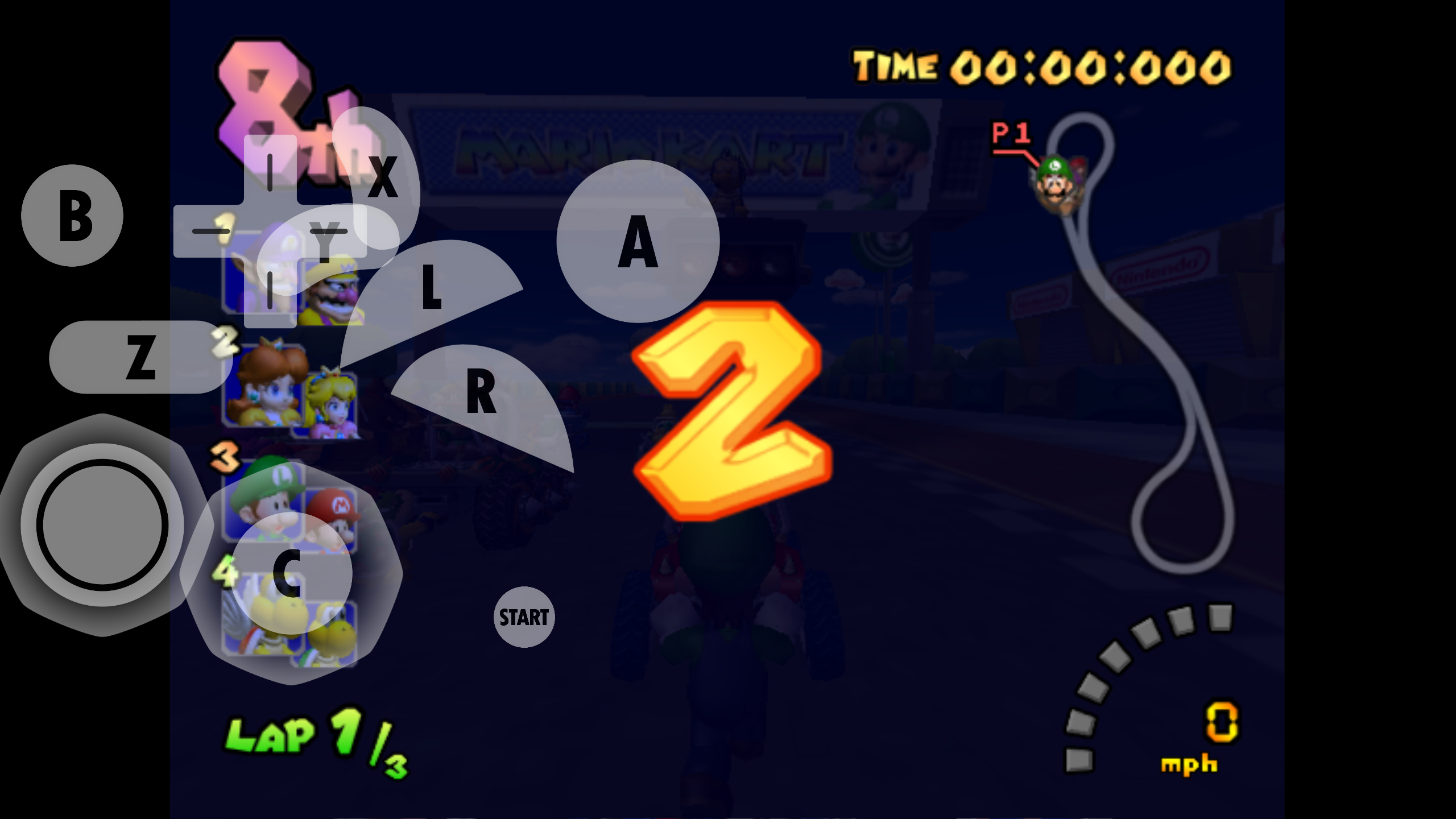

Greg Thomas, Sega of America's VP of Development said, "What does worry me is Dolphin's sensory controllers because there's an example of someone thinking about something different." These motion control concepts would not be deployed to consumers for several years, until the Wii Remote.

Long before the console's launch, Nintendo had developed and patented an early prototype of motion controls for the GameCube, with which developer Factor 5 had experimented for its launch games.

It is also the first Nintendo home console since the Famicom not to have a Mario launch game. Several games originally scheduled to launch with the console were delayed.
#Mario kart 7 rom dolphin software
Nintendo unveiled its software lineup for the sixth-generation console at E3 2001, focusing on fifteen launch games, including Luigi's Mansion and Star Wars Rogue Squadron II: Rogue Leader. The console was announced as the GameCube at a press conference in Japan on August 25, 2000, abbreviated as both "NGC" and "GC" in Japan and "GCN" in Europe and North America. The Dolphin platform is reputed to be king of the hill in terms of graphics and video performance with 128-bit architecture." Of the ArtX acquisition, an ATI spokesperson said, "ATI now becomes a major supplier to the game console market via Nintendo. In total, ArtX cofounder Greg Buchner recalled that their portion of the console's hardware design timeline had arced from inception in 1998 to completion in 2000. In April 2000, ArtX was acquired by ATI, whereupon the Flipper graphics processor design had already been mostly completed by ArtX and was not overtly influenced by ATI. Nintendo then began providing development kits to game developers such as Rare and Retro Studios. This included strategic alliances with IBM to create Dolphin's PowerPC-based CPU, codenamed Gekko, and with Panasonic (Matsushita) to create its DVD drive and its own Dolphin-based devices. On May 12, 1999, the console was first publicly announced at Nintendo's press conference with the codename Dolphin, as the successor to the Nintendo 64. The console's succession of codenames was N2000, Star Cube, and Nintendo Advance. Partnering with Nintendo in 1998, ArtX began the complete design of the system logic and graphics processor ( codenamed Flipper) of Nintendo's sixth-generation video game console. ArtX was led by Wei Yen, who had been SGI's head of Nintendo Operations and of Project Reality, which from 1993 to 1996 had scaled SGI's supercomputer design down to become the Nintendo 64. In 1997, a graphics hardware design company called ArtX was launched with twenty engineers who had previously worked at SGI.
#Mario kart 7 rom dolphin full
It was succeeded by the Wii, launched in November 2006 with full backward compatibility with GameCube games and accessories. Nintendo sold 21.74 million GameCube units worldwide, much fewer than anticipated, and discontinued it in 2007. It was praised for its controller and extensive library of high-quality games, but was criticized for its exterior design and lack of multimedia features. The Game Boy Player add-on runs Game Boy, Game Boy Color, and Game Boy Advance cartridge games. The GameCube supports e-Reader cards to unlock special features in a few games. The console supports limited online gaming for a few games via a GameCube broadband or modem adapter and can connect to a Game Boy Advance with a link cable for exclusive in-game features using the handheld as a second screen and controller. Unlike its competitors, it is solely focused on gaming and does not play mass media like DVD or CD. It is Nintendo's first console to use optical discs instead of ROM cartridges, supplemented by writable memory cards for saved games. In May 1999, Nintendo announced codename Dolphin, released in 2001 as the GameCube. Melee, Luigi's Mansion, Super Mario Sunshine, Metroid Prime, Mario Kart: Double Dash, Pikmin, Pikmin 2, The Legend of Zelda: The Wind Waker, Chibi-Robo!, and Animal Crossing.ĭevelopment was enabled by the 1997 formation of computer graphics company ArtX, of former SGI employees who had created the Nintendo 64, and which was later acquired by ATI to produce the GameCube's GPU. In the sixth generation of video game consoles, the GameCube competed with Sony's PlayStation 2 and Microsoft's Xbox. It is the successor to the Nintendo 64 (1996), and predecessor of the Wii (2006). The GameCube is a home video game console developed and released by Nintendo in Japan on September 14, 2001, in North America on November 18, 2001, and in PAL territories in 2002. Select Game Boy, Game Boy Color, and Game Boy Advance games via Game Boy Player


 0 kommentar(er)
0 kommentar(er)
